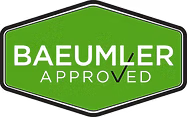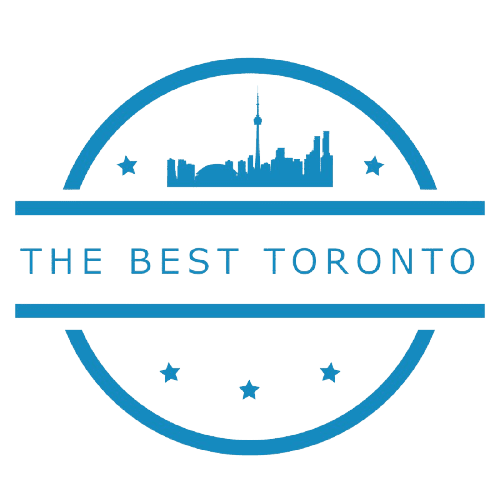Mold growth poses a persistent challenge for Toronto homeowners, threatening both property integrity and occupant health. As awareness of mold-related issues continues to rise, implementing effective preventive measures has become crucial. This guide offers practical tips to protect and prevent future mold growth in your home. It helps create a healthier living space for you and your family.
The humid climate and varying temperatures in Toronto create ideal conditions for mold reproduction. Homeowners can lower the risk of mold growth by understanding what causes it and taking action. From moisture control to proper ventilation, this article delves into expert-recommended techniques to keep your home mold-free.
If you are recovering from mold removal or want to protect mold in your home, these tips will help you keep your space mold-free. Let’s look at important steps to keep your Toronto home safe and free from mold for many years.
Effective Moisture Control Techniques
Controlling moisture is the cornerstone of mold prevention in Toronto homes. Homeowners can lower the risk of mold by using good moisture control methods. This helps create a healthier living space. Here are several strategies to keep moisture levels in check:
Addressing Water Leaks Promptly to Prevent Future Mold Growth
One of the most critical steps in moisture control is addressing water leaks as soon as they’re detected. Regularly inspect your home for signs of leaks, paying close attention to areas prone to water damage such as:
- Roofs and ceilings
- Plumbing fixtures and pipes
- Windows and door frames
- Basement walls and floors
If you see signs of water intrusion, like water stains, peeling paint, or warped materials, act quickly. Find and fix the source of the leak. Prompt repairs not only prevent mold growth but also protect your home’s structural integrity.
Proper Drainage to Prevent Future Mold Growth
Ensure that your home’s exterior is designed to direct water away from the foundation. Proper drainage and grading play a crucial role in preventing water from seeping into your basement or crawl space. Consider the following measures:
- Install and take care of gutters and downspouts. Make sure they are clear of debris. Direct water at least 5 feet away from your home’s foundation.
- Grade the soil around your home so it slopes away from the foundation. This helps water flow away from the building.
- Install a French drain or other drainage systems if your property is prone to water buildup.
Controlling Indoor Humidity Levels to Prevent Future Mold Growth
Maintaining optimal indoor humidity levels is essential for preventing mold growth. In Toronto, aim to keep indoor relative humidity between 30% and 50%. Here are some strategies to achieve this:
- Use dehumidifiers in areas prone to high humidity, such as basements and crawl spaces.
- Install and use exhaust fans in bathrooms and kitchens to remove moisture-laden air.
- Avoid air-drying clothes indoors, especially during humid weather.
- Consider using a whole-house dehumidification system for comprehensive moisture control.
Proper Ventilation Strategies
Adequate ventilation helps remove excess moisture and prevents the buildup of stagnant air, which can contribute to mold growth. Implement these ventilation strategies:
- Ensure that all exhaust fans vent directly outdoors, not into attics or crawl spaces.
- Use ceiling fans to promote air circulation throughout your home.
- Open windows when weather permits to allow fresh air to circulate.
- Consider installing a heat recovery ventilator (HRV) or energy recovery ventilator (ERV) to improve overall indoor air quality and moisture control.
By implementing these moisture control techniques, Toronto homeowners can create an environment that is inhospitable to mold growth. Remember, consistent maintenance and vigilance are key to long-term mold prevention.
Improving Indoor Air Quality to Prevent Future Mold Growth
Improving indoor air quality is important for stopping mold growth. It also helps create a healthier living space in Toronto homes. Poor air quality can not only contribute to mold reproduction but also exacerbate respiratory issues and allergies.
A mold test is crucial in these cases such as an air quality test for mold. Here are comprehensive strategies to improve the air quality in your home:
Effective Filtration Systems
Investing in high-quality air filtration systems can significantly reduce airborne mold spores and other pollutants. Consider the following options:
- HEPA Filters: Install HEPA (High-Efficiency Particulate Air) filters in your HVAC system. They capture tiny particles, like mold spores.
- Activated Carbon Filters: These filters work well to remove odours and harmful chemicals called volatile organic compounds (VOCs). These compounds can make the air quality worse.
- UV Air Purifiers: Ultraviolet light can help kill mold spores and other microorganisms in the air.
Regularly maintain and replace filters according to manufacturer recommendations to ensure optimal performance.
Proper Ventilation Techniques
Adequate ventilation is essential for maintaining good air quality and preventing mold growth. Implement these ventilation strategies:
- Use exhaust fans in bathrooms and kitchens to remove moisture-laden air.
- Ensure that all vents lead directly outdoors, not into attics or crawl spaces.
- Open windows periodically to allow fresh air circulation, especially after activities that generate moisture.
- Think about installing a whole-house ventilation system. An HRV or ERV can help exchange indoor and outdoor air consistently.
Regular Cleaning and Maintenance
Maintaining a clean home is crucial for good air quality and mold prevention. Follow these cleaning tips:
- Vacuum regularly using a HEPA-filtered vacuum cleaner to remove dust and potential mold spores.
- Dust surfaces with a damp cloth to prevent spreading particles into the air.
- Clean and disinfect bathrooms and kitchens regularly, paying special attention to areas prone to moisture buildup.
- Wash bedding and curtains in hot water regularly to remove allergens and potential mold spores.
Natural Air Cleaning Methods
Incorporate natural air cleaning methods to complement your air quality improvement efforts:
- Indoor Plants: Certain plants, such as spider plants and peace lilies, can help purify indoor air by absorbing pollutants.
- Beeswax Candles: These natural candles can help neutralize pollutants in the air.
- Essential Oils: Some essential oils, such as tea tree and eucalyptus, can kill germs. When you diffuse them, they help clean the air.
Monitoring and Controlling Humidity
Maintaining optimal humidity levels is crucial for preventing mold growth and improving air quality:
- Use hygrometers to monitor indoor humidity levels, aiming for a range between 30% and 50%.
- Employ dehumidifiers in areas prone to high humidity, such as basements and crawl spaces.
- Address any sources of excess moisture promptly, such as leaks or condensation issues.
By using these strategies to improve indoor air quality, Toronto homeowners can create a healthier environment. This will help reduce mold growth and benefit everyone living there. Remember that maintaining good air quality requires ongoing effort and attention to detail.
Regular Inspections and Maintenance to Prevent Future Mold Growth
Implementing a routine of regular inspections and maintenance is crucial for preventing mold growth in Toronto homes. By staying vigilant and addressing potential issues early, homeowners can avoid costly mold remediation and protect their property’s value. Here’s a comprehensive guide to conducting effective inspections and maintaining a mold-resistant home:
Establishing an Inspection Schedule
Make a clear inspection schedule. This will help you check all areas of your home. Look for signs of moisture or mold growth regularly.
- Monthly Inspections: Conduct quick visual inspection checks of high-risk areas such as bathrooms, kitchens, and basements.
- Seasonal Inspections: Do more detailed checks when the seasons change. Focus on areas that the weather affects.
- Annual Professional Inspections: Consider hiring a professional inspector to conduct a comprehensive assessment of your home’s condition.
Key Areas to Inspect
Focus your inspections on areas most susceptible to moisture and mold growth:
- Roof and Attic: Check for signs of leaks, damaged shingles, or inadequate ventilation.
- Basement and Crawl Spaces: Look for water seepage, condensation, or musty odors.
- Bathrooms and Kitchens: Check around plumbing fixtures, under sinks, and in shower areas for water damage or mold.
- Windows and Doors: Check for drafts, condensation, or water stains around frames.
- HVAC System: Examine ductwork, vents, and filters for signs of moisture or mold.
Maintenance Tasks to Prevent Future Mold Growth
Regular maintenance is key to preventing conditions that foster mold growth:
- Clean and maintain gutters and downspouts to ensure proper water drainage away from your home’s foundation.
- Seal any cracks or gaps in your home’s exterior to prevent water intrusion.
- Regularly clean and dry areas prone to moisture, such as bathroom tiles and shower curtains.
- Maintain your HVAC system, including regular filter changes and professional servicing.
- Trim vegetation around your home to improve air circulation and reduce moisture near the foundation.
Documenting Inspections and Maintenance
Keep detailed records of your inspections and maintenance activities:
- Create a checklist for each inspection, noting areas examined and any issues found.
- Maintain a log of all maintenance tasks performed, including dates and specific actions taken.
- Keep receipts and warranty information for any repairs or upgrades related to moisture control or mold prevention.
Responding to Potential Issues
If you discover signs of moisture intrusion or mold growth during your inspections:
- Address minor issues immediately, such as wiping down small areas of condensation or fixing a leaky faucet.
- For significant health problems, like serious water damage or visible mold, talk to a professional mold removal service.
- Investigate the root cause of any moisture problems to prevent recurrence.
Seasonal Considerations to Prevent Future Mold Growth
Tailor your inspection and maintenance routines to address seasonal challenges in Toronto:
- Spring: Check for winter damage and prepare for increased rainfall.
- Summer: Monitor humidity levels and ensure proper ventilation during hot, humid weather.
- Fall: Prepare your home for colder temperatures by sealing drafts and checking insulation.
- Winter: Be vigilant for ice dams and condensation issues caused by temperature differentials.
By following a regular inspection and maintenance routine, Toronto homeowners can prevent mold problems. This keeps their homes healthy and mold-free. Remember, prevention is always cheaper than fixing problems later. Regularly checking your home can save you time and money in the long run.
Proper Ventilation Strategies to Prevent Future Mold Growth
Ensuring proper ventilation is a critical component in preventing mold growth in Toronto homes. Adequate airflow helps control moisture levels, reduces humidity, and creates an environment less conducive to mold growth. Here’s an in-depth look at effective ventilation strategies to keep your home mold-free:
Understanding the Importance of Ventilation
Proper ventilation serves multiple purposes in mold prevention:
- Removes excess moisture from the air
- Reduces indoor pollutants and allergens
- Prevents the buildup of stagnant air
- Helps maintain consistent indoor temperatures
By promoting air circulation, ventilation helps create an environment where mold struggles to establish itself.
Natural Ventilation Techniques
Harnessing natural airflow can be an effective and energy-efficient way to ventilate your home:
- Cross Ventilation: Open windows on opposite sides of a room or house to create a natural airflow.
- Stack Effect: Use the idea of warm air rising. Open windows on different floors to create air movement.
- Window Placement: Strategically place windows to take advantage of prevailing winds in your area.
Natural ventilation is helpful. However, we must think about outdoor humidity and pollen levels. This is especially true in Toronto’s humid summer months.
Mechanical Ventilation Systems
For more consistent and controlled ventilation, consider implementing mechanical systems:
- Exhaust Fans: Install and regularly use exhaust fans in bathrooms, kitchens, and laundry rooms to remove moisture-laden air.
- You can use whole-house fans to pull cool air in through windows and expel warm air through the attic.
- Heat Recovery Ventilators (HRVs) and Energy Recovery Ventilators (ERVs) give fresh air all the time. They also recover heat or energy from the air that leaves. This makes them great for Toronto’s climate.
Ventilation for Problem Areas
Pay special attention to areas prone to moisture buildup:
- Attics: Ensure proper attic ventilation to prevent condensation and ice dams in winter.
- Basements and Crawl Spaces: Use dehumidifiers and consider installing a vapor barrier to control moisture.
- Bathrooms: Install timer-controlled exhaust fans to ensure adequate run time after showers or baths.
- Kitchens: Use range hoods vented to the outside to remove cooking moisture and odors.
Balancing Ventilation and Energy Efficiency
While ventilation is crucial, it’s important to balance it with energy efficiency:
- Use programmable thermostats to control when ventilation systems operate.
- You should think about installing smart vents. You can control them remotely or set them to work based on indoor air quality.
- Make sure to properly insulate your home to prevent heat loss while ventilating.
Maintaining Ventilation Systems
Regular maintenance of your ventilation systems is essential:
- Clean or replace filters in HVAC systems and exhaust fans regularly.
- Inspect ductwork for leaks or damage and seal as necessary.
- Keep vents and registers clear of obstructions.
- Schedule professional HVAC maintenance annually.
Seasonal Ventilation Strategies
Adapt your ventilation strategies to Toronto’s changing seasons:
- Spring and Fall: Take advantage of milder temperatures for natural ventilation.
- Summer: Use ventilation to remove hot, humid air, especially during nighttime hours when temperatures drop.
- Winter: Keep fresh air while staying warm. Use HRVs or ERVs to improve indoor air quality without losing too much heat.
By implementing these comprehensive ventilation strategies, Toronto homeowners can significantly reduce the risk of mold growth while improving overall indoor air quality. Remember that good ventilation is a process. It needs attention and changes all year long. This keeps your home healthy and mold-free.
Professional Mold Inspections Process and Assessments
Regular professional mold inspections and assessments play a crucial role in preventing mold growth in Toronto homes. Mold expert evaluations can find mold issues before they become significant problems. This helps homeowners save time, money, and health concerns. Here’s a comprehensive guide on the importance of professional mold inspections and how to make the most of them:
Benefits of Professional Mold Inspections
Professional mold inspections offer several advantages:
- Expertise in identifying hidden mold growth
- Access to specialized equipment for thorough assessments
- Knowledge of local building codes and mold regulations
- Ability to differentiate between mold species and assess health issues
- Provision of detailed reports and remediation recommendations
When to Schedule Professional Inspections
Consider scheduling professional mold inspections:
- Annually as a preventive measure
- After water damage or flooding incidents
- When purchasing a new home
- If you notice persistent musty odors
- If family members experience unexplained respiratory issues
- Before and after major renovations
Long-Term Mold Prevention Tips
Implementing long-term mold prevention strategies is essential for maintaining a healthy, mold-free environment in your Toronto home. These strategies do more than just fix problems. They aim to create lasting solutions that keep your home safe for years. Here’s a comprehensive guide to long-term mold prevention:
Developing a Comprehensive Moisture Management Plan
Create a holistic approach to moisture control:
- Identify and address all potential sources of moisture in your home
- Implement a regular maintenance schedule for plumbing and HVAC systems
- Develop a response plan for water emergencies
- Consider installing whole-house humidity control systems
Improving Building Envelope Performance
Enhance your home’s ability to resist moisture intrusion:
- Upgrade insulation to prevent condensation on walls and ceilings
- Install vapor barriers in crawl spaces and basements
- Seal air leaks around windows, doors, and other penetrations
- Consider upgrading to energy-efficient windows to reduce condensation
Implementing Smart Home Technology
Leverage technology for proactive mold prevention:
- Install smart humidity sensors throughout your home
- Use automated ventilation systems that respond to humidity levels
- Implement water leak detection systems with automatic shut-off valves
- Consider smart HVAC systems that optimize indoor air quality
Landscaping for Mold Prevention
Design your outdoor space to support mold prevention:
- Ensure proper grading to direct water away from your home’s foundation
- Install French drains or other drainage solutions in problem areas
- Choose plants that don’t require excessive watering near the house
- Maintain trees and shrubs to prevent moisture buildup on the roof or siding
Upgrading Ventilation Systems
Invest in advanced ventilation solutions:
- Install heat recovery ventilators (HRVs) or energy recovery ventilators (ERVs)
- Upgrade bathroom and kitchen exhaust fans to high-efficiency models
- Consider whole-house ventilation systems for consistent air exchange
- Implement zoned ventilation for areas prone to moisture buildup







